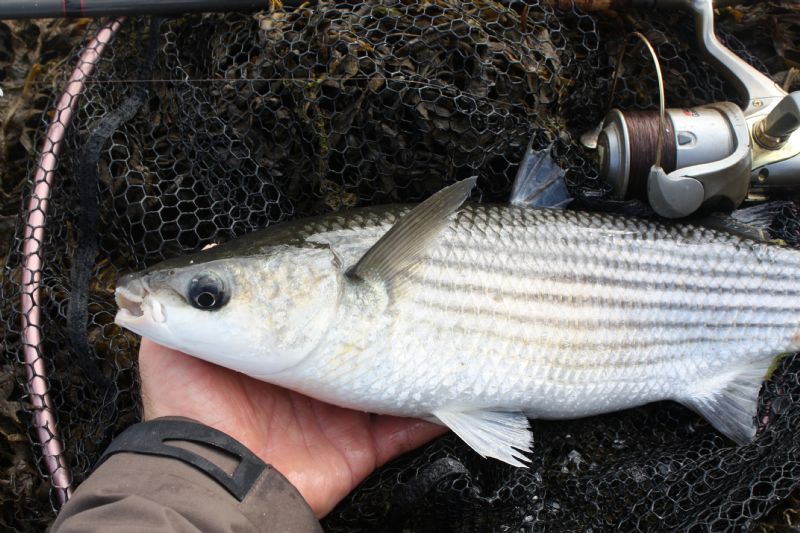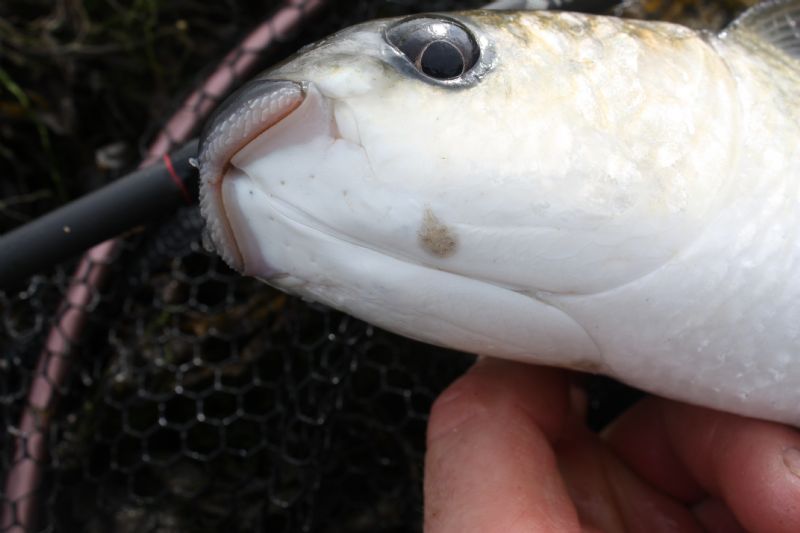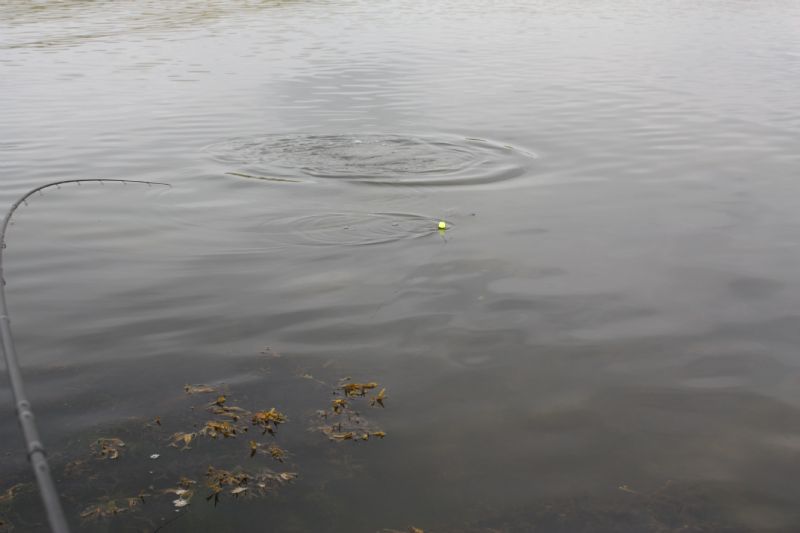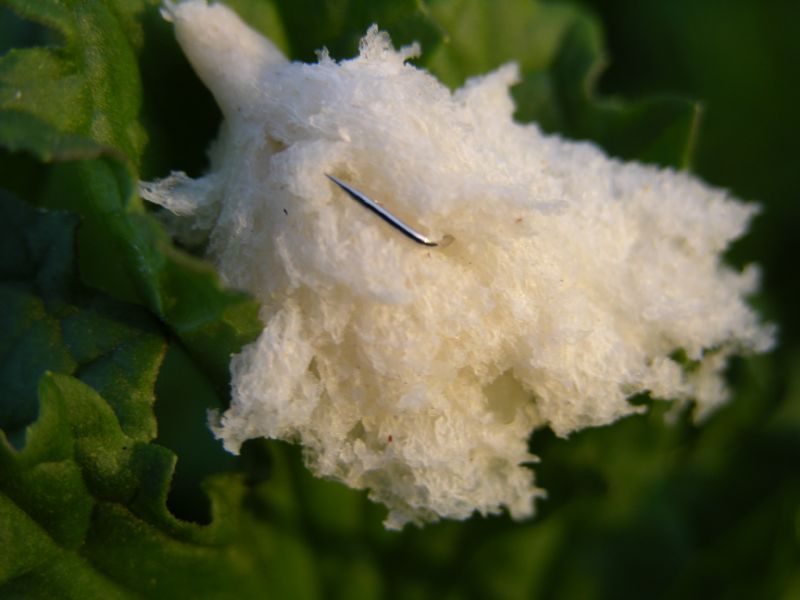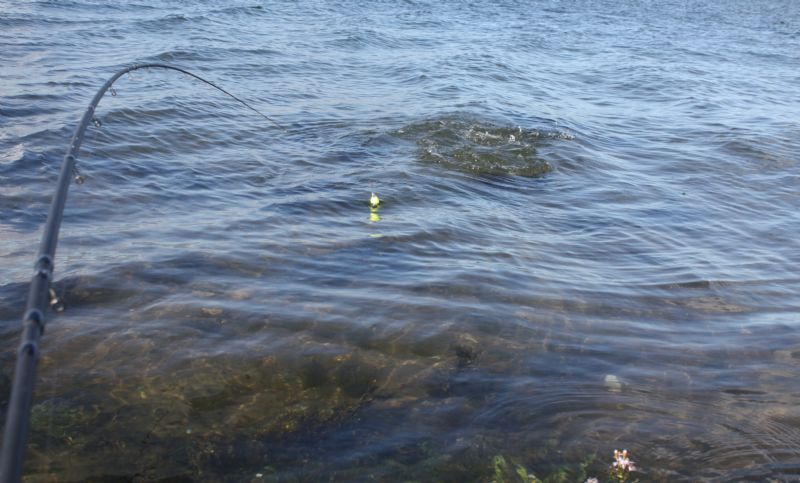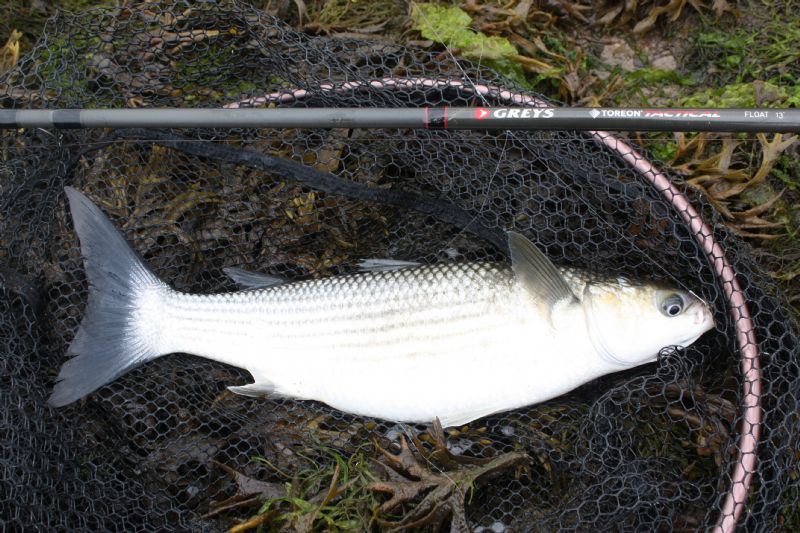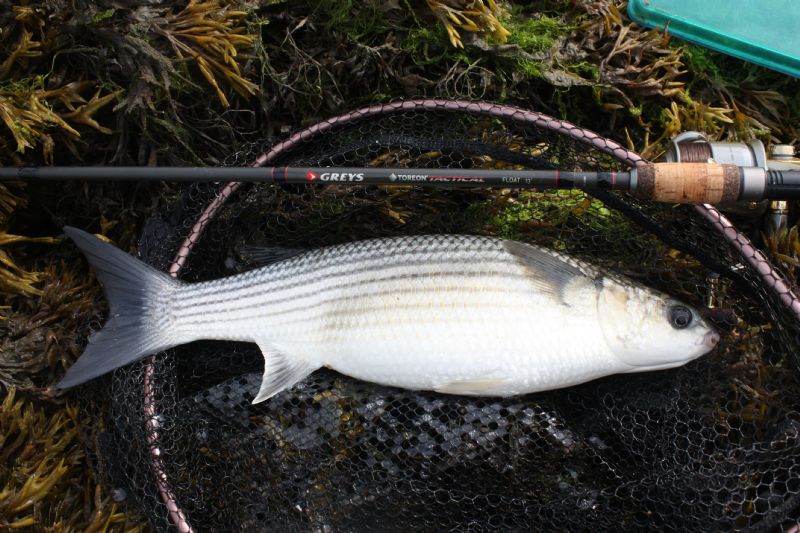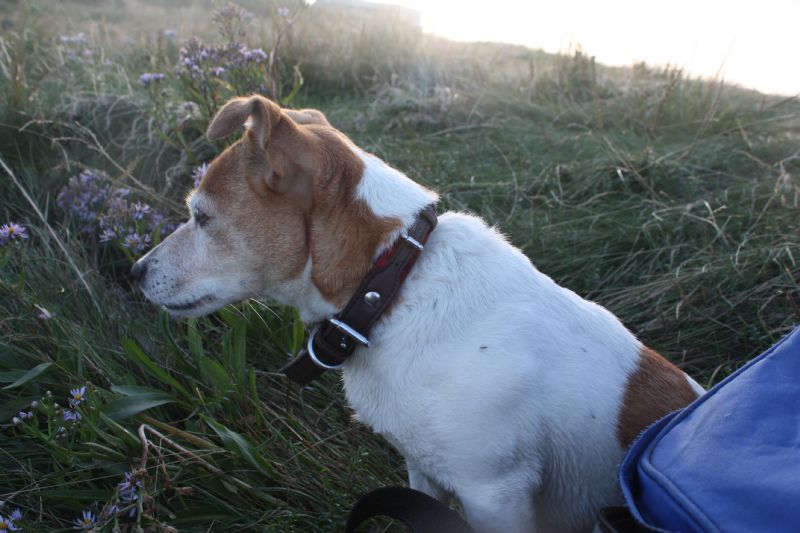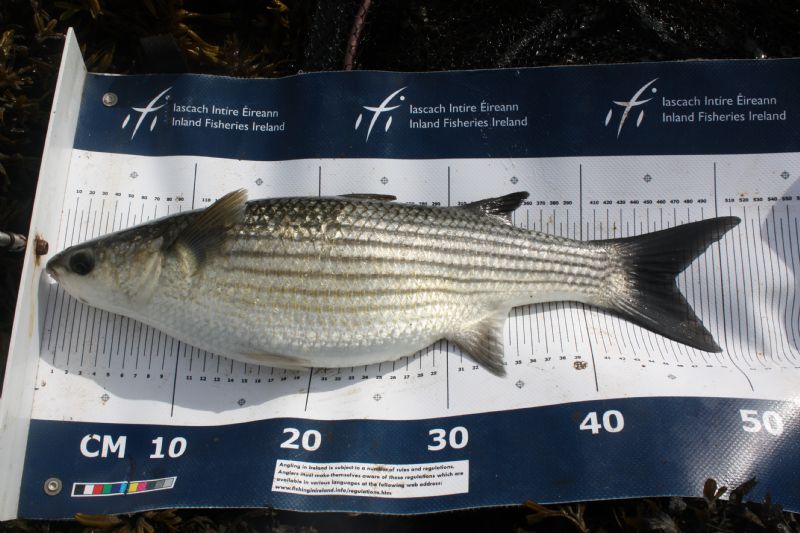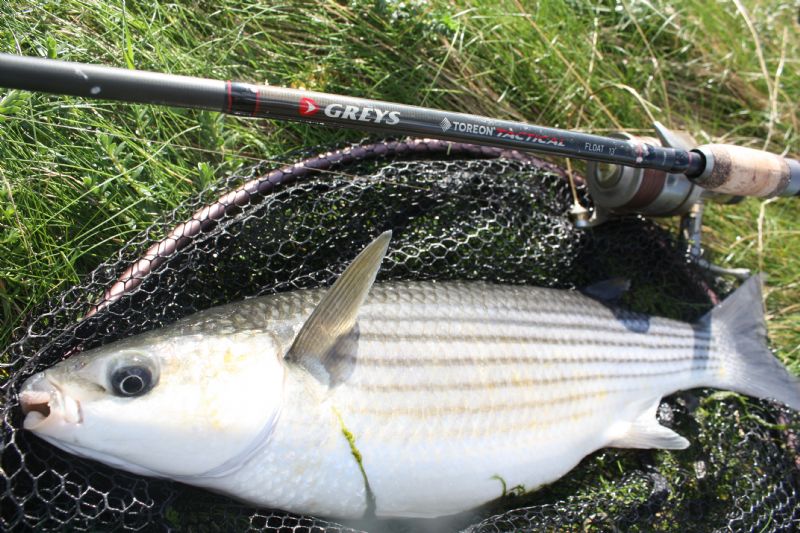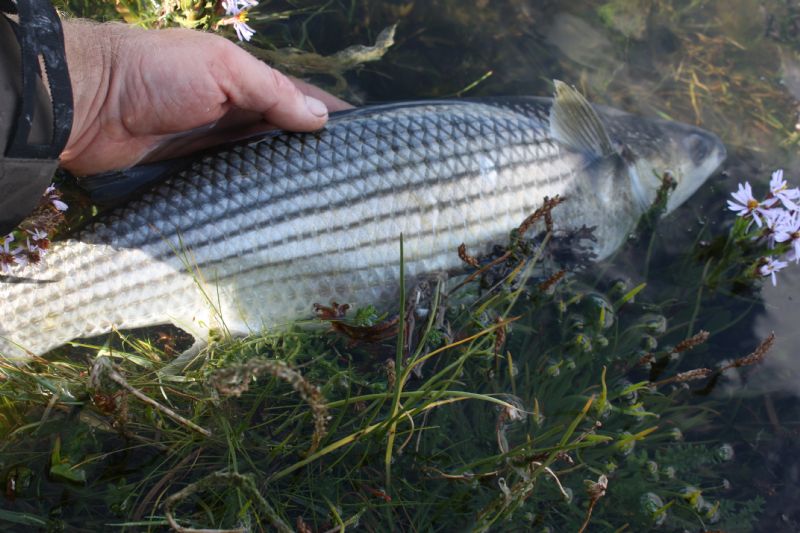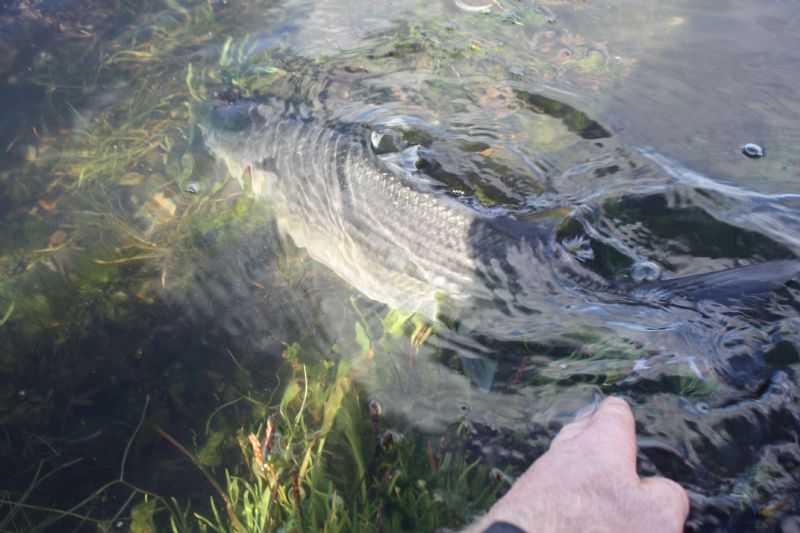A Winter Warmer
Terry’s Travels
A Winter Warmer
My friends will tell you, if asked, that I am a warm-weather angler.
I suffer the winter poorly, only made bearable by some cold-weather Pike angling.
At this time of year I yearn for the long summer days and warm gentle breezes, when my thoughts often wander to stalking sessions along the estuaries and inlets of the County Down coast. This is usually in search of "Irish Bonefish", the silver torpedoes also known as Grey Mullet. It's these fabulous memories of the summer past that keep my angling interest alive, awaiting the Spring rise in temperature to burn off the winter blues.
"Soft-lip" is an old wives tale. Mullet mouth-parts are tough for scraping algae off rocks.
Targeting Mullet is an angling discipline equally enjoyable alone or with one or two friends, but I have to admit that I get a kick out of stalking this quarry by myself, moving at my own speed, every footstep carefully placed, Heron-like, sometimes managing to get within a couple of metres of an unwary shoal, before they "spook" and cruise off to deeper water.
I only managed to create one opportunity for a Mullet hunt during the summer of 2018. Having finished work early and at a bit of a loose end, I checked out a favourite wee Mullet mark that produces well on the odd occasion. The rising spring tides were perfect, and with gentle off-shore breezes, I really fancied my chances of putting a bend in the Greys Toreon float rod.
The "Toreon Tactical" 13ft Float Rod from Greys, perfect for all Mullet angling.
It didn't take long to spot the tell-tale break in surface ripples that belies the presence of foraging fish. They love the warmer temperatures of the shallows, grazing algae or sifting out sand shrimps, and often give the game away with a dorsal or tail fin breaking the surface, as the nose dips to plough a furrow in the silt.
A large pinch of bread flake, a classic Mullet bait
Spotting a shoal of feeding fish is half the battle, and once "spied" it is now a case of tempting them to try whatever you will be putting on the hook, usually a large, soft flake of bread. If they are pre-occupied on a particular food source, it can be very difficult, if not impossible to grab their attention, but with a bit of luck one or two fish may be tempted into trying a free sample as it passes over-head.
And this is the secret. Do not be too eager to bait-up and cast in. If the shoal is particularly wary, and this accounts for most Mullet fishing in Northern Ireland, it is wise to stay low to the water, and carefully throw, or catapult if necessary, free samples upstream, or upwind of the shoal first. The idea is to create a sense of security, to allow the shoal to feed without fear, and, with patience, you will see most of the shoal readily accepting the free offerings drifting their way.
Powerful "lunges" are absorbed by the Toreon rod tip to help prevent hook pulls.
By this stage, a fish is in the bag, almost. Presentation can be key. I know there are occasions when Mullet will defy all logic and fight over a hook-bait, but usually in my "mulleting" experience it takes little to cause them to scatter in all directions, and you will have to begin the stalking process all over again. Not an option when you only have a few hours in the evening!
Safely netted. Hard to beat the power and beauty of a sleek Irish Grey Mullet.
I use an old pike float, cut down in size, and shaped for ease of casting. The bottom end is drilled out and filled with lead so the float is "self-cocking", and attached top end through a swivel. This design of float casts well, without damage to delicate bait, and you can see it at distance. These controller type floats can be bought, but I seem to easily break most I've used, and my home-made one has lasted years. It's not a case of being a cheap-skate, I simply need the reliability and not have to change a broken float just when the fish start to feed!
Another stunning fish is fooled by the stealthy tactics.
Staying low to the horizon is best achieved by wading. Stealth is normally vital, using slow, deliberate steps until within casting and feeding distance. This is where a small catapult can be handy, quietly flicking pieces of bread up-tide of the un-wary shoal, without dramatic arm movements. I realise this all sounds a little OTT, but Mullet, especially in the North of Ireland can be frustratingly coy. With stealth and patience, the un-catchable become reasonably easy to fool.
Skip is on Mullet watch
After ten minutes or so of the conveyor belt of bread drifting over the shoal, individual fish began picking samples off the surface, then actually fighting for it. This is the green light to follow down with a baited hook, and "bang"! A huge boil as the large tail powers the hooked fish sea-wards in an eruption of spray, fins and foam!
A measure mat and sharp photo is required if you wish to "verify" a specimen over 5lbs
The experienced "mulleteer" will have the clutch pre-set for line to tear off under pressure, but also continue feeding the stream of bread to settle the remaining shoal. Moving upstream to fight the fish will also help greatly from "spooking" as you would love to return and have another bite at the cherry once the hooked fish has been landed and released.
Quickly brought to the scales, this first fish, first cast, topped the specimen weight of 5lbs, what a start, and even better, having returned to the mark, the shoal were happily sipping the last pieces of bread drifting down-tide. Repeating the scenario, a missed fish, then another landed, and so it continued.
As the light faded and the shoal grew suspicious and finally dissipated, I had to submit to nature and call it a day. I managed to land five fish all between four and five pounds, "turned" a couple and lost two after a battle. Not a Northern Ireland personal best in size ratios, but certainly in number. When a hunch and technique works out it gives a fabulous sense of achievement. I caught a few hard-fighting Mullet, I found inner peace, all is well with the world, once again.
Tackle
Obviously, when "stalking" fish, an angler tends to cover some area, so it pays to be organised and travel light. A standard, but good quality "match rod" is ideal, I use a Greys "Toreon Tactical float rod". Having tried many rods over the years to target Mullet, to date, this is without doubt the best yet. Light-weight, powerful but with a soft tip section to cast delicate baits and cushion powerful lunges from large, fast moving fish. Team this with a 3000 or 4000 size spinning reel loaded with 8lb nylon.
Greys "Toreon Tactical" 13ft float rod, the ultimate Mullet rod?
Chest waders are imperative on most occasions, and also, a light, water-proof wading jacket. A small landing net clipped and hung on the waist or over the shoulder for easy one-handed access once a fish is played out. As a specimen hunter, I carry a rucksack with measure mat, weighing scales and camera in a sealed water-proof case, spare loaf of bread and enough small items of tackle as spares, i.e. hooks, leader line, floats, swivels etc.
Always make sure your catch has had time to recuperate
Then safe and gentle release
For ease of baiting up when on the move, a tackle "bum-bag" or carp boilie-bag is ideal to carry bait, catapult, small un-hooking forceps etc. Being organised when travelling light is vital, for the angler but also the fish, regarding safe and quick un-hooking or weighing if required. For the "end gear", I use 6lb fluorocarbon hook lengths with size ten coarse angling hooks, and 8lb mainline, as this is about as light as you can go but still have the odds in your favour, but stepping up in line strength if the environment is too harsh. Hope this short blog is of interest, and whets your appetite to stalk a Mullet if you haven't already tried it. Stay safe, Tight Lines
Some tackle links to help or available from good stockists
Greys Toreon Tactical Float Rod 13ft
Penn 1338218 Battle II Spinning Reel, 3000
Berkley Trilene Fluoro XL Fishing Line - Clear, 6 lb / 200yd
Greys Unisex's GX Scoop Net, Small
Greys NEW Strata CTX Breathable Fishing Waders Medium




